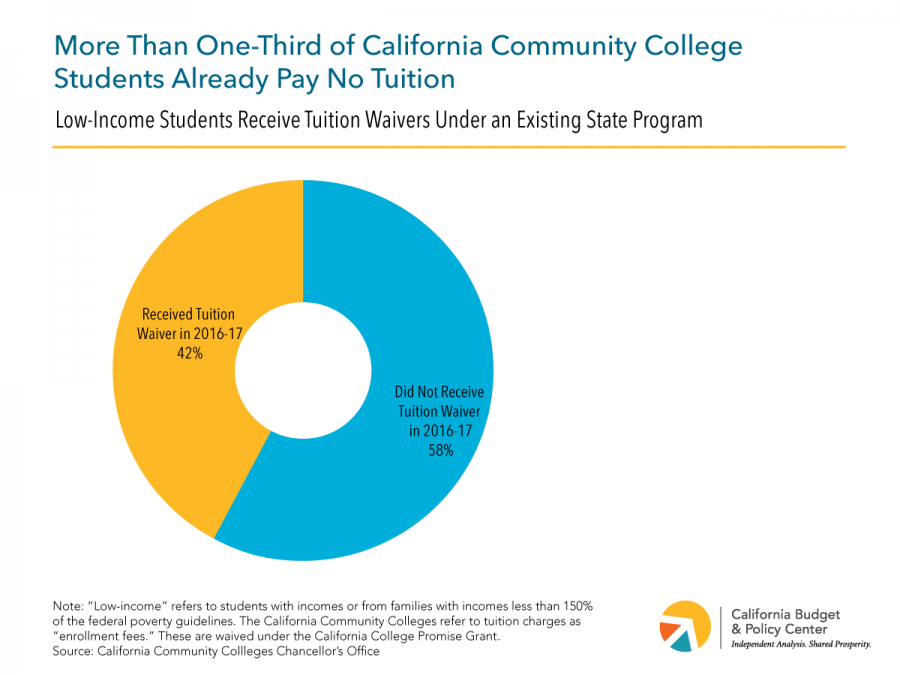California promises free community college
California Budget and Policy Center
According to the California Budget and Policy Center, more than one-third of California community college students already pay no tuition through the help of various government programs.
October 29, 2019
Free tuition for two years at California community colleges sounds too good to be true. Well, it’s the truth.
Governor Gavin Newsom just recently expanded a tuition waiver program, and the number of students who will benefit depends on who qualifies.
Melissa Nagar, Riordan’s college counselor, believes this is a good program for students who come from low-income families.
“I think that free community college is an excellent program for students,” she said. “I think that access to education is sometimes difficult and we’re moving that barrier of having to pay for general education or whatever programs that a student might be seeking at a community college helps with access.”
There are two programs that help pay for tuition at community colleges in California: California College Promise Grant and California College Promise Program. The California College Promise Grant pays community college fees of lower-income, California resident and AB 540 eligible students. The grant is available regardless of how many units the student takes.
The California College Promise Program offers two years of free tuition for first and full-time students in California.
Full-time students, California residents or AB 540 students, and first-time college students qualify for the Promise Program. California Community Colleges report that about 2.1 million students attend one of the 115 community colleges in California.
According to the Governor’s budget summary, 33,000 students are estimated to be eligible for the second year of free tuition under the Promise Program and is budgeted at $42.6 million. That’s about 1.5 percent of students who attend a community college in California, and this program is paid for by the Proposition 98 General Fund. The Promise Program pays for two years of community college if a college chooses to waive fees.
A student who attends a California community college is a California resident or exempt from non-resident fees under the California Dream Act, and have financial aid qualify for the Grant Program. There are three ways that students can receive financial aid: Type A, Type B, and Type C.
Under Type A, a student receives Temporary Aid For Needy Families (TANF), Supplemental Security Income (SSI/SSP), or General Assistance. Under Type B, a student has to meet the income standards that are based on federal poverty guidelines. Lastly, under Type C, a student has to submit FAFSA or a California Dream Act application (CADAA) and must show that he or she did not meet financial aid.













